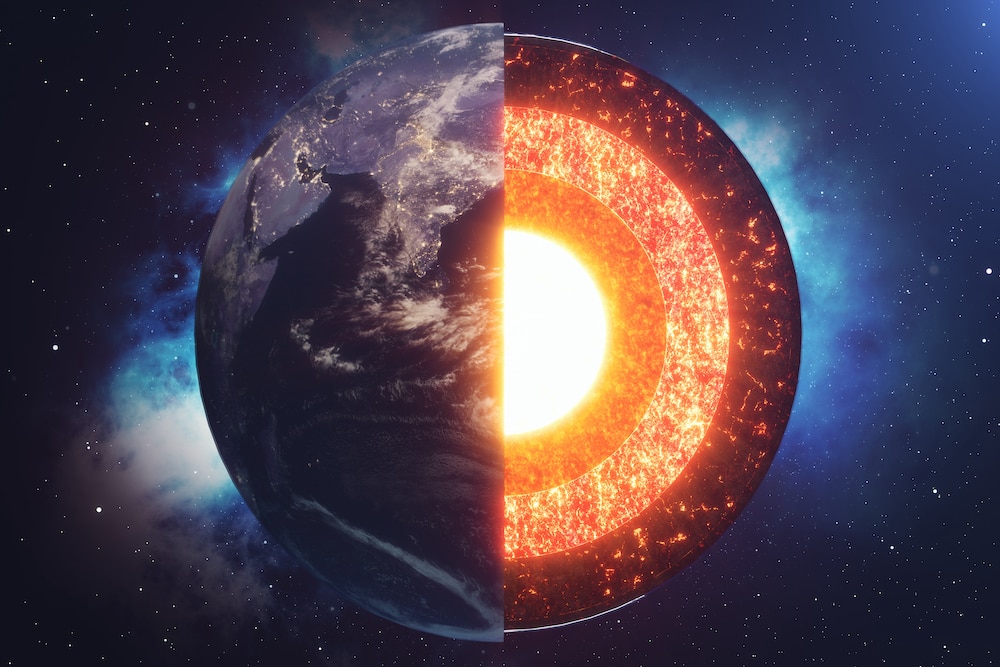Create a free profile to get unlimited access to exclusive videos, sweepstakes, and more!
Earth has an exhaust leak that goes way back to the Big Bang
This is not the stuff that comes out of your car.

Earth has a continuous gas leak, but it’s nothing like what comes out of your car. These are the exhaust fumes of the Big Bang that escape from the planet’s core.
Primordial gases were swirling around in the cosmos when the universe is thought to have exploded into being (if it really did start with a bang). Helium is one of the first gases to have appeared on the scene, and mass quantities of its isotope Helium-3 (He-3) were in the heart of the nebula in which Earth and the other planets in the solar system formed around an embryonic Sun. How much seeps out from the core versus the mantle was a mystery until now.
Helium-3 could give away more about how Earth was born in the solar nebula. Geophysicist Peter Olson, who led a study recently published in Geochemistry, Geophysics, Geosystems, went deeper than ever to figure out the amount of He-3 being released form the core. He and his research team found that it is actually the core and not the mantle which is the main source of He-3. Meaning, Earth had to have been born near the center of the nebula where most of this gas was found, at a time when the nebula thrived and was not on the edge of dissipating into space.
“Most He-3 is primordial, made in the aftermath of the Big Bang by adding a proton and a neutron to hydrogen,” Olson told SYFY WIRE. "A similar process occurs in some stars, although there, it is mostly consumed in creating Beryllium 6 or Be-6.”
Enough He-3 makes it out of Earth every year to fill a giant beach ball, but there is still more than enough left over from its formation which is still trapped in the core. There could be anywhere from 10 teragrams, or a million tons, to a petagram, or a billion tons. How so much managed to hang in there for eons and eons is mystifying. To come up with these massive amounts, the researchers modeled this isotope during our planet’s early formation and post the alleged Moon-forming collision. These were critical times for helium on — and in — Earth.
Planets are born from enough material in a nebula accreting to form their cores, which is why scientists think some asteroids are actually planetary cores that never grew up. Nascent Earth must have picked up massive amounts of He-3 before the material that would become its mantle and crust accreted onto the core. That can explain how the isotope actually got there.
Turbulence was the norm in the early solar system. Long before an asteroid would crash to the surface and obliterate the dinosaurs, the hypothetical object known as Theia, a body about the size of Mars, supposedly smashed into proto-Earth and formed the Moon. Both Earth and Theia are thought to have initially formed in the same environment and been made of mostly the same stuff. The impact was so intense that almost all of Earth and Theia melted and re-formed into one planet, with a glob of mass that had broken off ending up as the Moon.
“For early Earth, we modeled He-3 transferred from the solar nebula to a surface magma ocean, and from there to the core, via the sinking of core-forming metals into which He-3 was dissolved,” said Olson. “Post-Moon formation, He-3 diffuses from the core to the lower mantle.”
After the Moon came into being, He-3 would diffuse form the core to the lower mantle and get caught in its monstrous convection currents until smaller plumes of plasma carried it to fissures between tectonic plates, from which it would escape into the atmosphere. Some is belched out by volcanoes and other cracks in the surface that lead to the molten mantle. Earth was never the same after the collision that birthed the Moon, and Olson and his colleagues think that it is likely that is one of the main reasons He-3 is still leaking out of the core billions of years later.
“The Moon-forming collision is the most obvious way for the mantle to have lost its He-3, since it would have melted and de-gassed during that event,” he said. “In order for He-3 to leak from the core to the mantle, the mantle must have lost nearly all of its share of He-3.”
Whether other volatiles from the dawn of time are also sneaking out of Earth is something that is being investigated. The most ancient exhaust fumes ever might eventually tell us what happened before life even dreamed of existing.


























